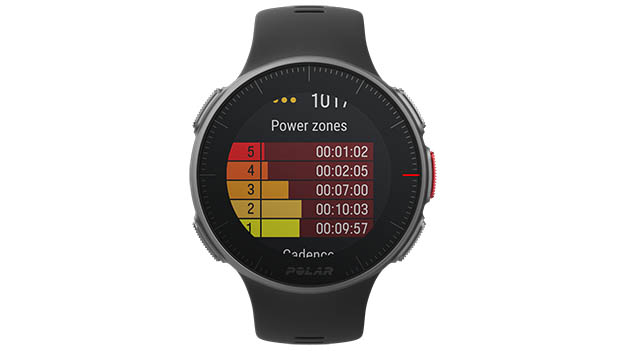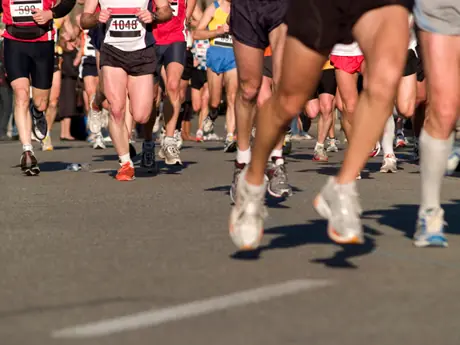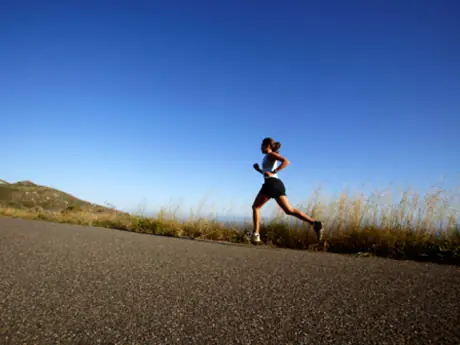
If you're lucky enough to own the latest running tech, you probably know it's capable of measuring a host of physiological and running dynamic metrics. But do you really know what all those advanced metrics mean? If you want to get the most out of your high-end wearable, this article goes deep into the definitions of four of the most useful advanced running metrics.
Training Load
Training load is one of the most useful new metrics available to runners. Simply put, training load helps you train at an intensity and frequency that encourages better performance without putting you at risk for overtraining.
Using advanced wrist-based heart rate technology, the latest wearables measure the stress on your aerobic system during and after a workout to determine the toll it's taken on your body. If you wear your device all the time, it can also use heart rate and sleep data to factor in any non-exercise-related stress that may be contributing to your overall load.
With this data, your device's software or its app can give you personalized recommendations on when you should take an extra rest day, or even give you a nudge when you've been taking it a little too easy.
Ground Contact Time (and GC Balance)
If you're plagued by a nagging running-related injury and you can't figure out why, Ground Contact (GCT) Time might be the answer. Just what it sounds like, GCT measures the average amount of time each foot spends on the ground over the course of a run. As a byproduct of running form, GCT is unique to each runner, but generally speaking, the faster you run (and the shorter your stride length and quicker your cadence), the shorter your GCT.
Where injuries are concerned, the amount of time your feet spend on the ground may be less important than the balance of GCT between your right and left foot. If feedback from your wearable indicates an imbalance, that's a good sign that something is off in your form. By bringing GCT balance closer to 50/50, you can help correct those form imbalances and prevent a possible future injury. One of the ways you might fix your form is by curbing your vertical oscillation.
Vertical Oscillation
Vertical oscillation is simply how much you bounce up and down as you run. If you've ever had a running coach, you've likely heard them tell you to keep your head still when you run. Experienced runners know this gets harder and harder as you become more fatigued; vertical oscillation is essentially a sign that your form is breaking down.
For those who have a naturally "bouncy" gait all the time, reducing the amount your body travels vertically as you move it horizontally down the road can make you faster and more efficient. For starters, try shortening your stride length, and as you run, imagine balancing a book on top of your head. As with any form fix, you'll have to do this for weeks to notice improvements, but your patience will pay off with improved running economy and likely lower impact forces.
Running Power
Running Power is one of the newest and most difficult metrics to grasp because, unlike with cycling where moving parts can be measured against resistance, it's just you and your feet moving against the ground when you run. So to get a better idea of what running power is and how you can use it, ACTIVE interviewed Sanna Merio, a product manager with Polar, as well as Jussi Peltonen, the research scientist who integrated running power into Polar's Vantage V running watches.
"Power is essentially the amount of work in unit of time that you do against external resistance," Peltonen says. In this case (with running) those external forces are gravity and friction. To get a better picture of what that means, maybe we should start with why we did it and what are the benefits.
"We have been measuring heart rate for a long time, but it has certain limitations and one of those is that it has a slow reaction time. It's pretty hard to get into heart rate Zone 5; it takes a long time. That's due to physiology. But your work rate, your intensity, has been high already from the beginning of the workout."
In other words, like heart rate, running power measures intensity but with a much faster reaction time. This makes it a much more useful tool for workouts like speed intervals or hill repeats where intensity level is changing quickly.
Running Power can also be used for long, slow runs, and here, too, it may have an advantage over only using heart rate. "For the beginners," Merio says, "if you are doing a little bit longer run, power is a good way to keep it slow through the whole run and not start too fast in the beginning." Indeed, where heart rate generally starts low, climbs gradually, plateaus for a while and then peaks near the end of longer runs, if your effort is constant throughout a run, running power will reflect that.
With so many different brands and models of running watches available, not all of them currently offer all of the above features. But as running technology continues to evolve, these are some of the core features you can expect to find on your wrist in the future. And when the time comes, you'll now know their importance and how to use them to improve your running.
READ THIS NEXT: How Valuable Is Your Running Technology?
Get ACTIVE on the Go


Couch to 5K®
The best way to get new runners off the couch and across the finish line of their first 5K.
Available for iOS | Android







Discuss This Article